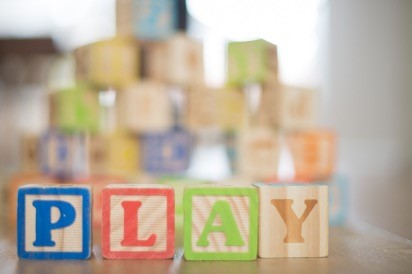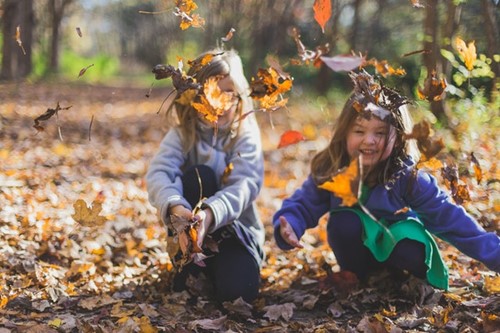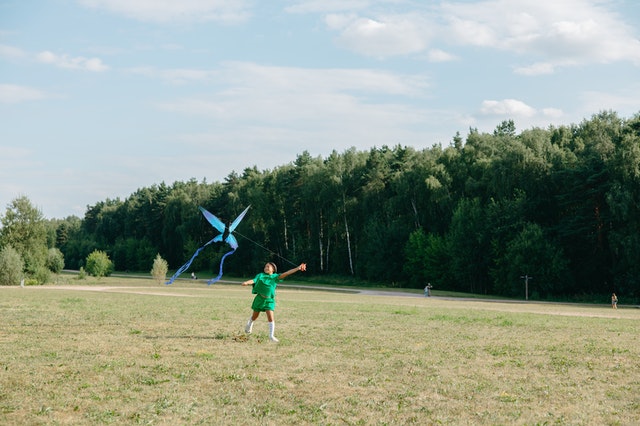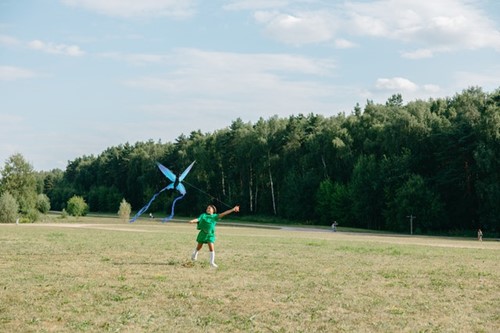The Power of Play
Written by Katie Jackson, founder of Kindling Education.
Imagination is more important than knowledge’ Albert Einstein
When the World Economic Forum creates a video encouraging children to play more, then I think it’s about time we listen. They claim, ‘to be a superhero is to lead, to host a teddy for tea is to organise; to build a fort is to innovate.’ This isn’t a new idea, there’s plenty of research out there showing that ‘to play is to learn’. Time spent building lego isn’t just helping their fine motor skills but it’s improving concentration. Role playing with friends is promoting social interaction, whilst developing an understanding of empathy. Risk management skills might begin whilst exploring in the woods. Play allows children to develop many of the skills they will need as they grow up. It provides endless opportunities for understanding the world, as well as learning how to learn.

But what type of play are they talking about specifically? And is the type of toy important? It’s true that we need all types of play - physical play, social play, pretend play, language play, object play and even digital play, and as we know our children will have preferences. But what we really want to know is, are they all as good as each other? To some extent, yes. As long as it’s personal and meaningful, then creativity will happen. Although in my mind, not all play was created equal and I am starting to realise that perhaps there’s actually a hierarchy of toys too. There are toys and then there are toys. We have ‘high affordance toys’ and ‘low affordance toys’. An action man figure with a plastic weapon is an example of a high affordance toy. It’s a toy that gives a certain play direction, whereas a set of plain Lego bricks or wooden blocks is an example of a low affordance toy. It tells you a lot less about how to play with it. This means there’s more opportunity for open ended play to happen and it’s this type of play that is crucial for our children’s development and progress as it embeds a deeper level of understanding of the world around them.
What we need to ensure is that children have enough open ended play. Imagine a world of complete safety - no wrong answer, no one way to do something, and best of all, no rules. It’s true most types of play encourage children to develop their ideas and imagination, but it’s the skills surrounding open ended play that might hold the answers to their future success. Open-ended play helps children make sense of the world, whilst developing their critical thinking skills, creativity, confidence and imagination, and allowing time to process their learning. Eventually children put these skills into practice in different environments, instinctively experimenting more and creating meaningful connections. Ultimately playful learning occurs with open ended toys as it encourages children to take greater risks, without any fears or pressure, enabling them to build their confidence and problem solve whilst learning from their mistakes. And all through the subtlety and pure joy of playing, in a world that is safe, secure and makes sense to them.
However, play is about more than just future success. Play forms part of the foundation children need to be happy. When children play, not only do they experience a place to test their ideas, engage in activities, but they experience a type of freedom like no other. They enter a world without restraints, a world completely under their control. In fact it’s really the only thing they control properly. It must be seriously empowering, but it’s more than that, it is actually a necessity, a biological and physiological need. We need to remember that children can only learn when their basic needs are met. They need love, safety and security. Play gives children a safe space which helps build self esteem, ease worries and even regain control, particularly in times of chaos or crisis. Ultimately play is the answer to so many of our children’s needs, and it’s no wonder that play therapy is so commonly used to support children (and adults) through difficult situations.
It’s worth noting that not all children know how to engage in different types of play. Learning to play can actually be quite tricky for some children. Climbing trees is a skill, losing monopoly isn’t easy and negotiating play ideas with friends can be a whole new ball game. But by participating in different activities children can acquire these play skills, it may just need a little more time and practice, just like any other skill. As adults we can help facilitate this by providing rich environments, being responsive and positively engaging with their games. By directing, guiding and observing different play activities we can support in so many ways. Whether that’s setting up play invitations, modelling new languages, extending their ideas and skills, introducing different concepts or addressing difficult issues. If you are wondering how best to support your child when playing together, then try to remember ‘PRIDE’ - praise, repeat, imitate, describe and enthusiasm - this should help get the most out of play sessions.

I hope that we can be brave as we manage our fears caused by the pandemic. I hope we can continue to support our little ones and make time, freedom and space for them to play, rather than just the ‘#SummerOfPlay’ initiative. I hope we can recognise that closing the academic gap can’t be fixed by more lessons or tutors, but actually by more opportunities for play for children of all ages. What’s clear is the opportunity to play allows children not just to learn, but more importantly to be. Be themselves, be healthy, be safe but above all, be happy. Emotional wellbeing really is the answer to academic success, and at Kindling Education https://www.kindlingeducation.com/services we help parents with young children learn how to put emotional wellbeing first, whilst equipping them with practical skills, expert knowledge and advice, enabling children to thrive at school.
So next time your child is immersed in a world of teddies, they’re building their fort or they’re saving the world; leave them, observe them, or better still join them. Let them share their world with you and let them lead you on an adventure. Who cares if you feel silly, focus on the bonds you are building, the joy you are creating and the things they are learning. And who knows, perhaps it will be the most affordable therapy to date.


World Economic Forum video clip: https://www.youtube.com/watch?v=u-Fi826RxPU&feature=youtu.be
Some open ended websites that promote playful learning, imagination and creativity
- Makedo - (4 years +) construction play - https://int.make.do
- Kidly - https://www.kidly.co.uk/categories/play/play-and-learn/8290
- Scandiborn - https://www.scandiborn.co.uk/collections/all-montessori
- Natural Babaa - https://naturalbabaa.com/collections/learning-development?page=2
- Connetix - https://connetixtiles.com
Some Play Ideas:
- Let children take control of a playtime when they play with you. Let them take control of what the adults do e.g. they may turn you into a robot and you have to follow silly instructions. You’ll be surprised how much children love this, especially if you allow things to get silly!
- Create new areas of play e.g a den or tent area, a water play area, messy play, a fairy garden or simply a new toy.
- Give choices and ideas for playtime or play areas - especially if you notice that your child enjoys playing with the same toy or activity all the time.
- Try playing some instrumental music during playtime, especially during arts and crafts.
- Play silly games like ‘Would you rather’ and ask for them to explain why! Would you rather be invisible or breathe underwater’ ‘Would you rather eat pizza or ice cream for the rest of your life?’ ‘Would you rather have a personal robot or a magic carpet?’ ‘Would you rather live without toys or an ipad?’
- Try to use neutral toys (as this encourages open ended play) like plain wooden blocks. It's likely that you already have lots at home e.g. most sets of Lego or Duplo will do the job!
- Let them get messy, try and tolerate the mess and not worry too much about tidying up around them constantly and if possible buy non toxic finger paint, playdough, makers and food colouring etc.
- Use descriptive praise if your child shows you something they’ve created, or explains how their game works. Try to avoid directing play all the time, even if their game doesn’t make sense, or is factually incorrect, go with the flow!
- Play in nature, let them make lots of noise, let them be as noisy and free as possible.
- Experiment with different types of play - your child may prefer one type of activity simply because they lack confidence or the skill set to engage in different activities.